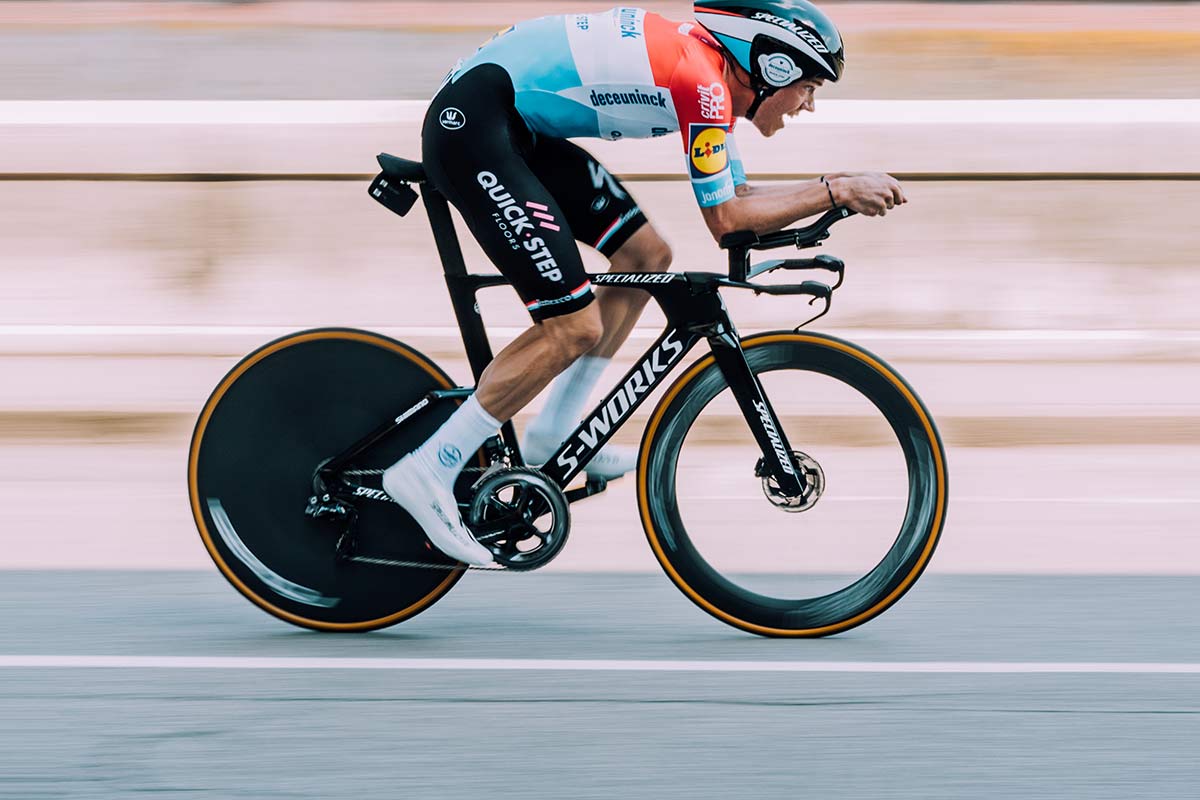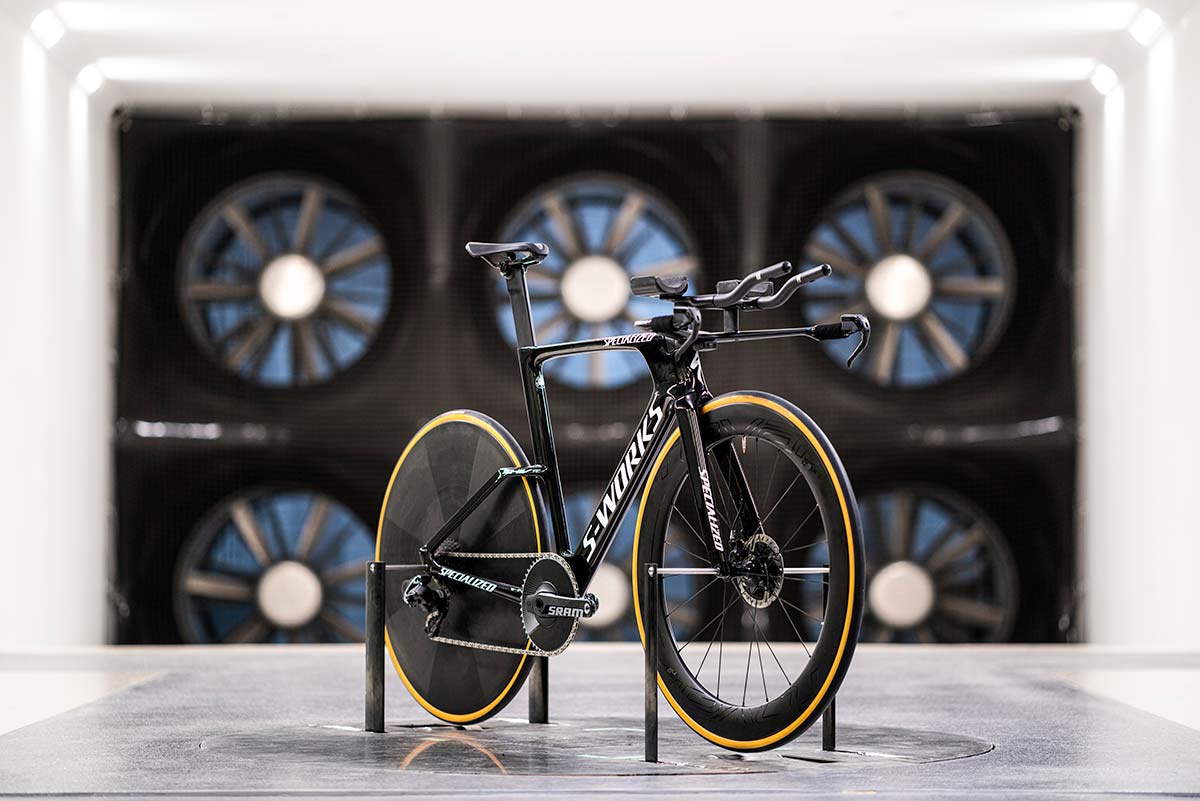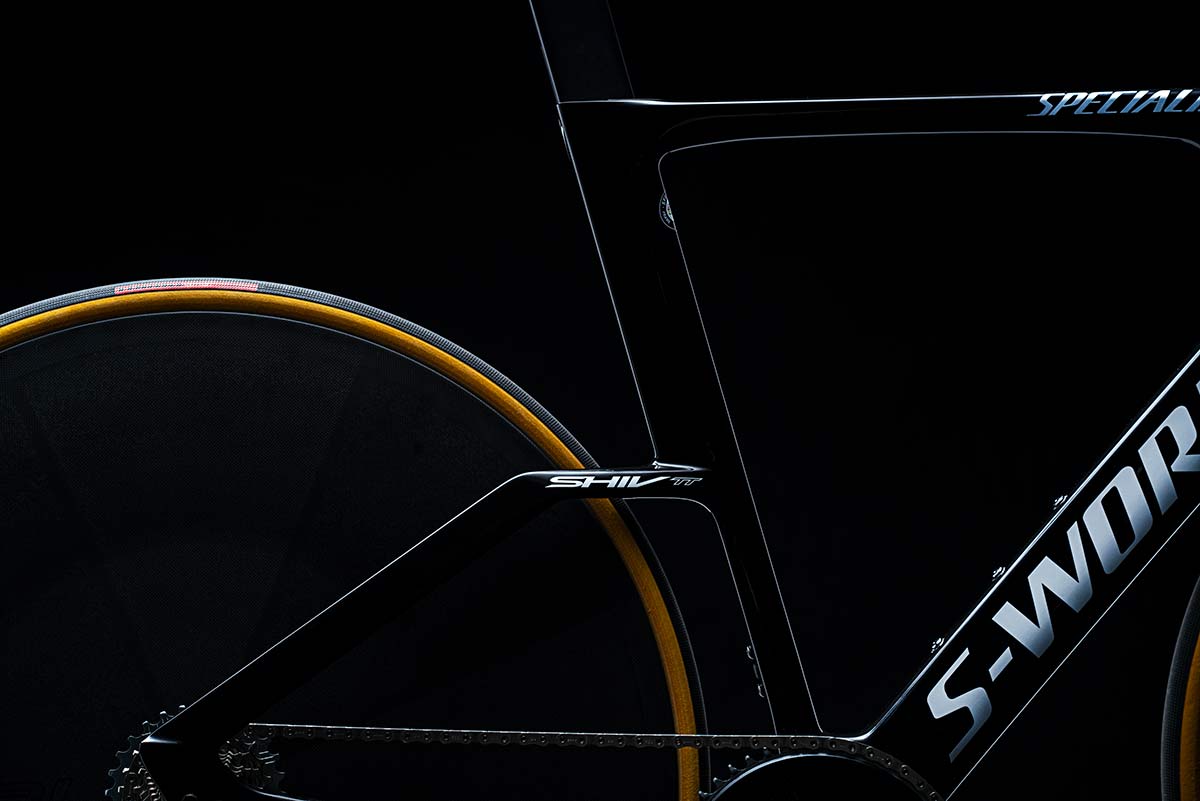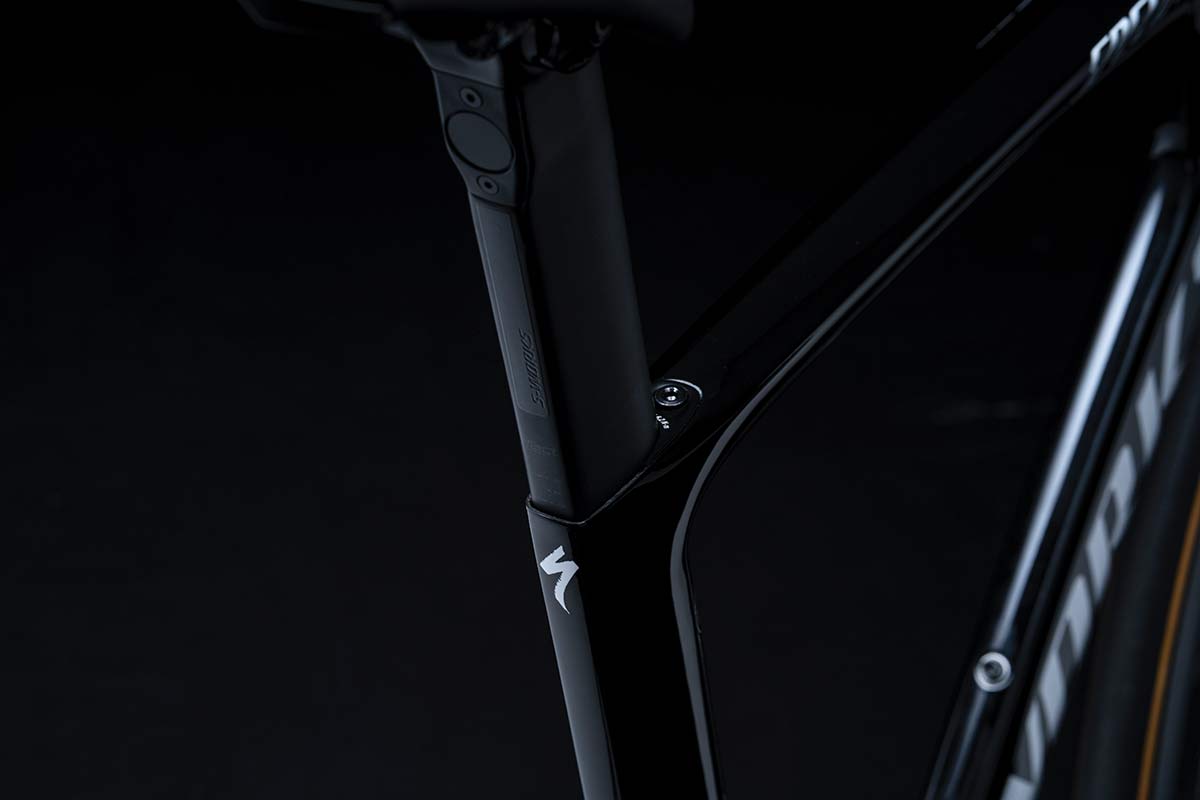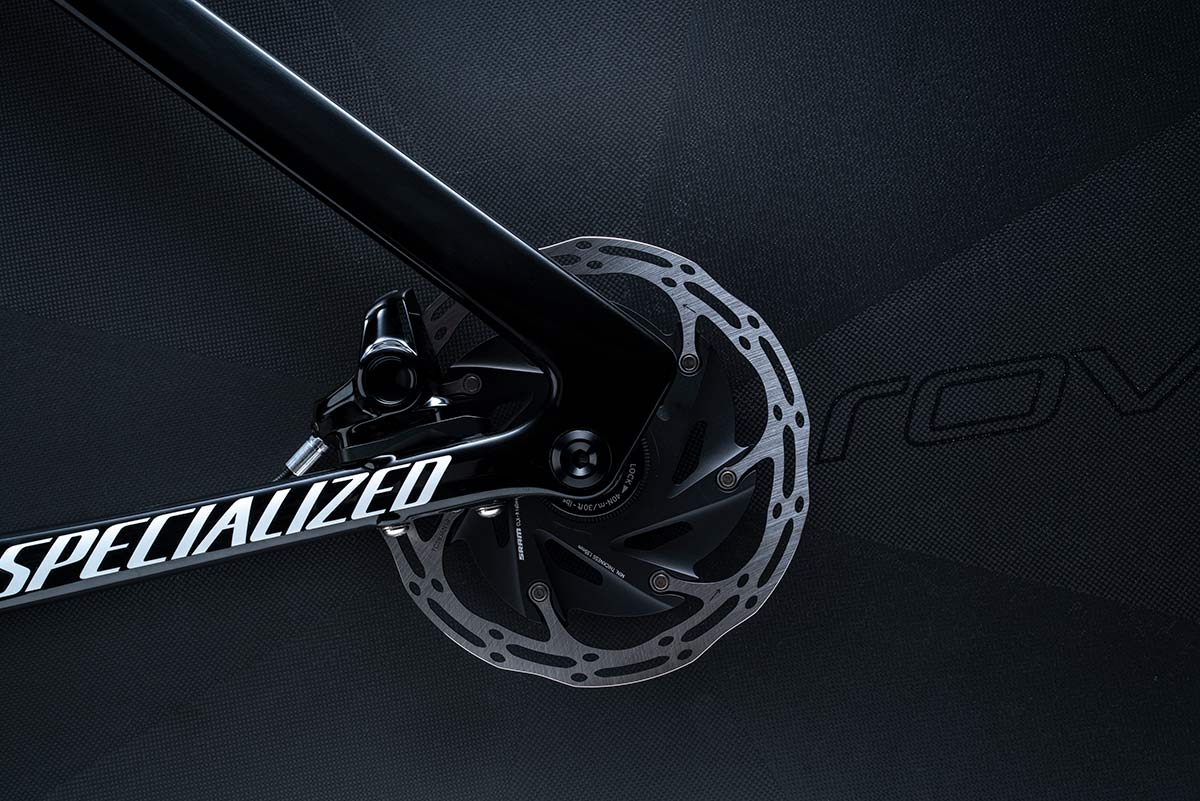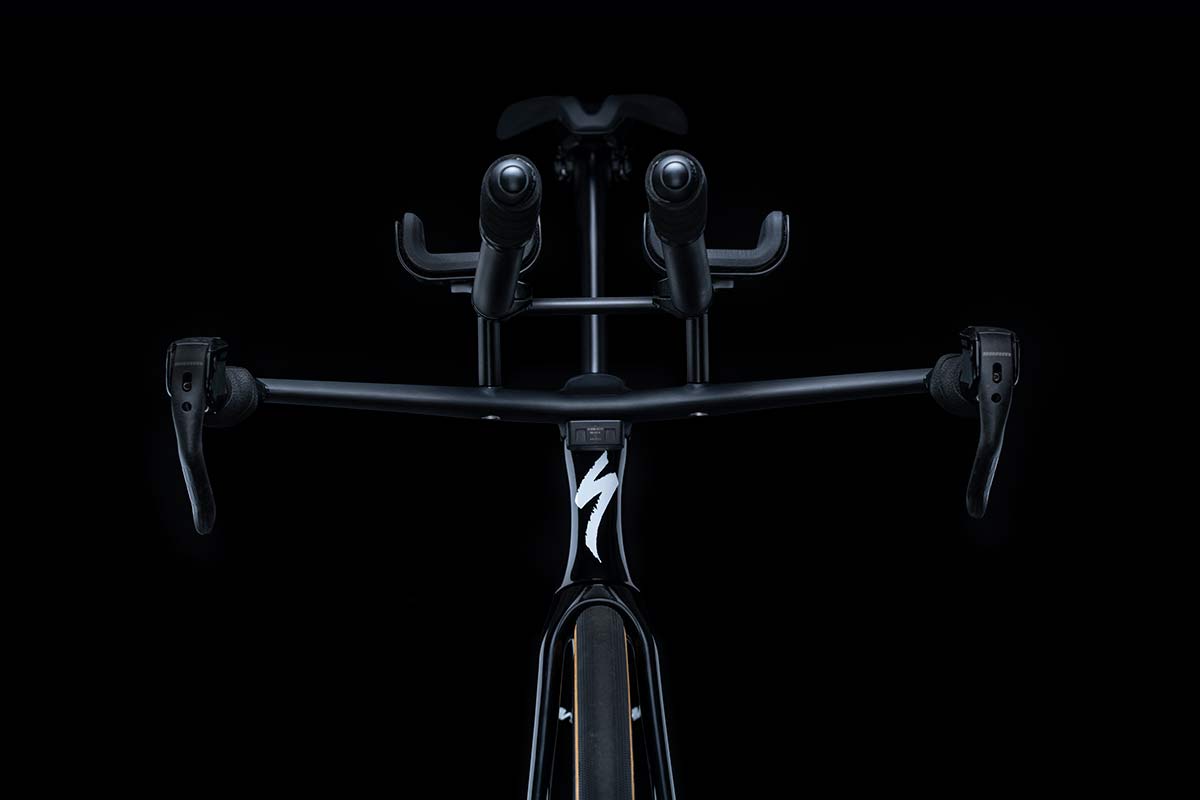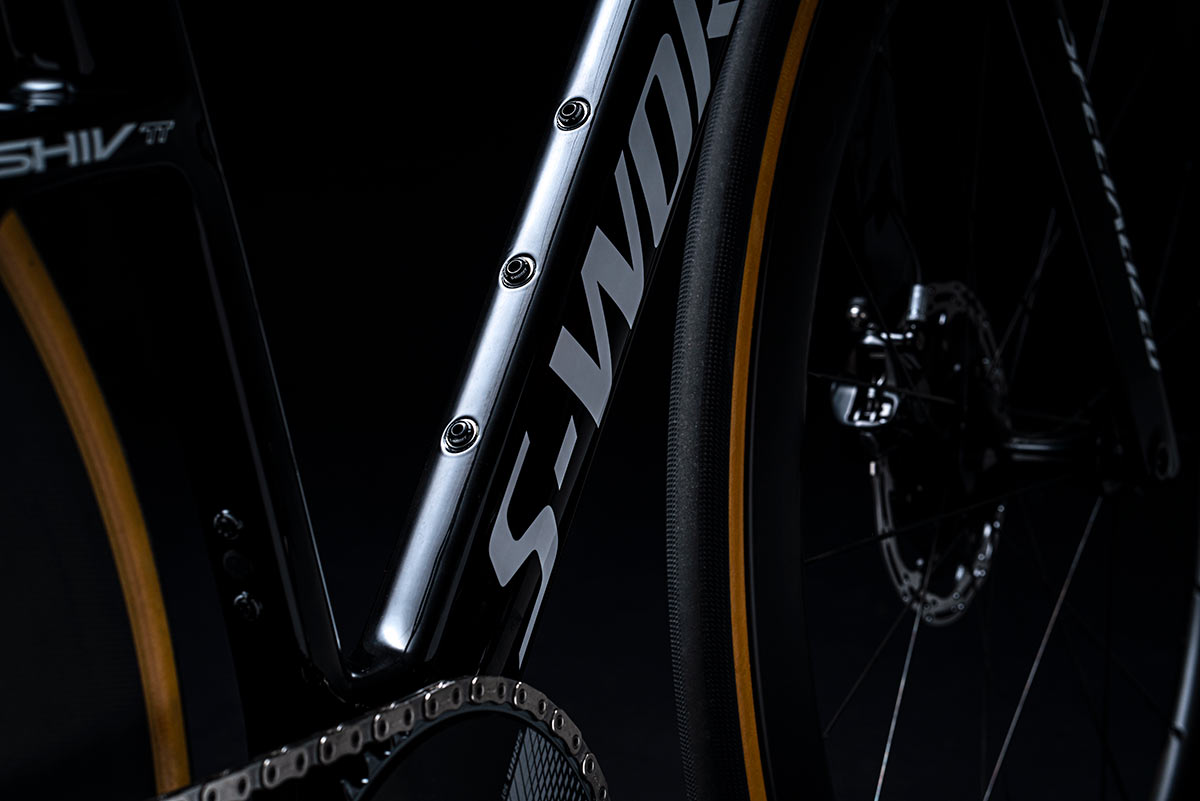The new Specialized SHIV TT Disc takes everything that was good about the original and makes it better, giving it road bike handling, more stopping power, and lighter weight…all without giving up much in the way of aerodynamics. At the end of the day, rider comfort and confidence weighed a bit heavier on the scale than all-out pure aerodynamics, but only slightly.
Here’s the spiel from Specialized:
“You’ve heard us say #AEROISEVERYTHING, but not at the expense of all else, and nothing exemplifies this better than the all-new Shiv TT Disc. The previous Shiv has been the most dominant TT bike in the world. It’s the most aerodynamic UCI legal bike with multiple world championships, Olympic gold, Tour de France stage wins, and so many elite national championships we’ve lost count. So, how did we make the fastest bike in the world faster?
“First, we ensured it’s every bit as aerodynamic as the original. Then we cut 500grams out of the frame, fork and cockpit. Next we ensured the new Shiv TT handles and accelerates like our best road bikes so you can forget all the time trial bike stigmas of heavy frames, sketchy, handling, and skinny airfoils. The Shiv TT Disc represents speed for today’s World Tour. Speed to attack the most technical time trial courses, drill the steepest climbs, and race with supreme confidence. And, yeah, it’s still the most aerodynamic bike in the start house.
“This is the New Shape of Speed and it’s already winning on the World Tour. Under Project Black Shiv TT Disc recorded its first victory at the Tour de Suisse with Deceuninck – Quick-Step’s Yves Lampaert at the Tour de Suisse and already has three Elite National TT championships! It’s safe to say, our athletes are thrilled about the new bike.”
To accomplish the palatable handling and climbing prowess, Specialized says they used all of the “Free Foil” shapes in their database and rethought the seat tube shapes. Rather than go with the deepest airfoil shape allowed by the UCI, the chose one that offered both a slippery shape and light weight and composed character.
That design relies on a 1x drivetrain and Specialized’s Roval 321 full disc rear wheel to accomplish the aero claims. But, it is 2x compatible thanks to a removable hanger that bolts to the trailing edge of the seat tube. But, you will have to run it with an electronic drivetrain, there are no cable stops or ports on this bike.
The seatstays are dropped to the UCI limit, which drastically reduces drag by stretching as much of it horizontally as possible. And the lack of an oversized seat tube shield with rear wheel cut out is where they saved a lot of the weight on the frame. Above it, the new SHIV TT Disc shares the same seatpost as the Venge, offering more rider comfort on a part that ends up getting into muddy air from the rider’s legs.
They saved drag at the front by sculpting the fork crown and head tube much easier than they could have when working around a rim brake caliper, so they say the disc brakes don’t add much drag to the overall balance. And with thru axles making thing stiffer overall, the handling improvements are noticeable.
Behind that, they say the downtube ended up have less influence on aerodynamics than originally thought, which they proved in the Win Tunnel (their in-house wind tunnel at their Morgan Hill, CA, headquarters). So they made it more “road bike” like in terms of stiffness and power transfer and ride quality.
Despite all these changes, they say it’s technically just as aero as the prior SHIV, but the lighter weight and better handling will make riders even faster.
Up front, they chopped another 200g from the cockpit by moving to a one-piece bar-and-stem, but it still allows full adjustment range on the aero bars and arm rests.
Reach and wheelbase grow slightly from the prior version, but the stack remains the same as the prior S, M and L frame sizes. The entire bike was designed not just to be fast, but also easy to work on, with easy to access hose and wire ports and other touches to make your (or your mechanic’s) life easier.
Other comparisons to the previous model include:
- Additional 6- and 10-degree pitch angles for the extension sockets and armrest combination.
- Additional 30mm of possible stack height that now reaches up to 145mm.
- Armrest outboard lateral adjustment remains close to MY10-18 Shiv TT, losing 6.85mm per side with a max center-to center pad width of 194.3mm.
- Additional 20.25mm of armrest inboard lateral adjustment per side with a minimum center-to-center of 81.5mm.
- Additional middle reach armrest position, in between full rearward and forward adjustment.
- Additional yaw capability of armrests independent of extension socket due to oversized mounting holes.
- Additional yaw capability of extension sockets—inboard 4 degrees and outboard 0 degrees.
The new bike is being raced now, and will hit dealers this winter.
